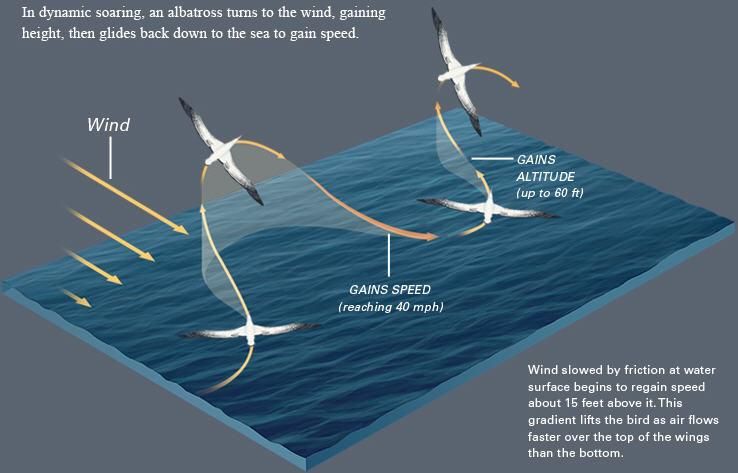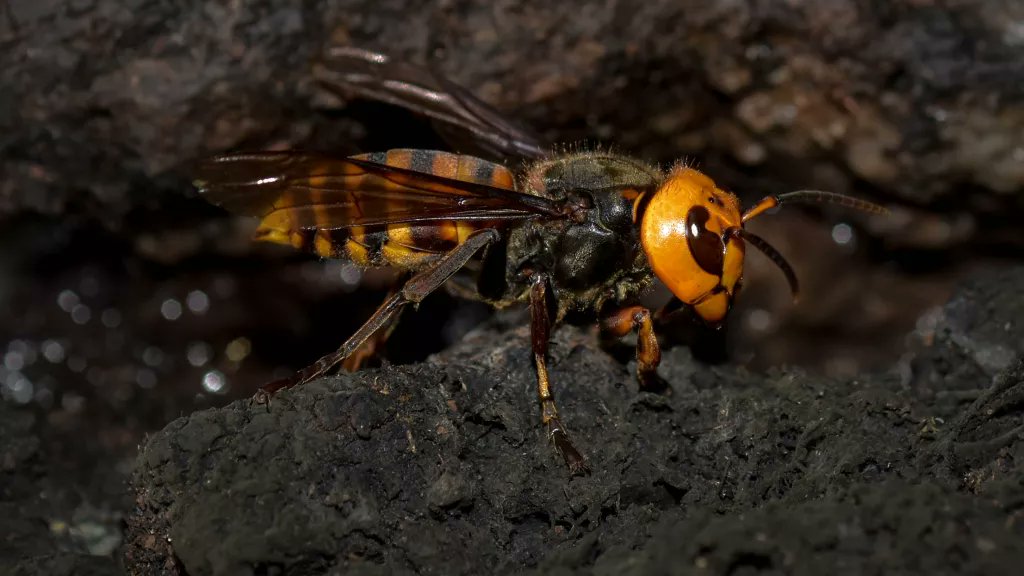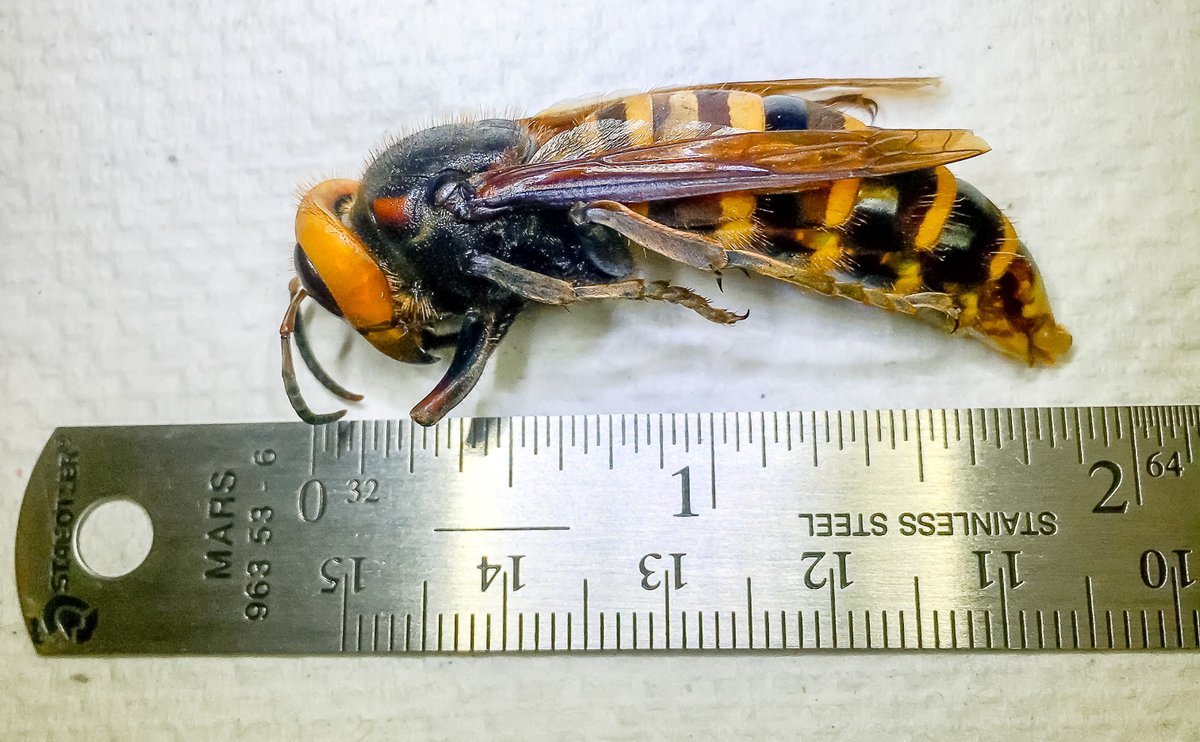The Albatros, the biggest flying bird in the world, can go for years without touching land, has complicated, comical mating dances that take years to learn, and might even help scientists track down illegal fishing vessels. Here are some interesting facts about these big birds. 

Albatros fact #1
There are 23 species of albatrosses, though arguably the most famous is the wandering albatross (Diomedea exulans), which is the largest flying bird in the world. This bird has a 3,4 meter wingspan, even bigger than the famous California condor.
There are 23 species of albatrosses, though arguably the most famous is the wandering albatross (Diomedea exulans), which is the largest flying bird in the world. This bird has a 3,4 meter wingspan, even bigger than the famous California condor.

Albatros fact #2
Wandering albatrosses (and many other large albatrosses) travel thousands of kilometers in a single Journey by holding their extended wings in place so that the air rushing around the wings generates lift, similar to an airplane's wings.
Wandering albatrosses (and many other large albatrosses) travel thousands of kilometers in a single Journey by holding their extended wings in place so that the air rushing around the wings generates lift, similar to an airplane's wings.

Albatros fact #3
They can go 1 year or more without setting foot on land, although they do touch down in water in order to feed on the squid & fish that make up their diet. In fact, it's the common swift, not the albatross, that holds the record for non-stop distance flying
They can go 1 year or more without setting foot on land, although they do touch down in water in order to feed on the squid & fish that make up their diet. In fact, it's the common swift, not the albatross, that holds the record for non-stop distance flying
Albatros fact #4
It is theorized that Albatrosses sleep in the air, based on a study on a study of a distant cousin of the albatross, the frigatebird, who has many, seconds-long periods of sleep while flying, suggesting that sleeping in the air is definitely possible.
It is theorized that Albatrosses sleep in the air, based on a study on a study of a distant cousin of the albatross, the frigatebird, who has many, seconds-long periods of sleep while flying, suggesting that sleeping in the air is definitely possible.

Albatros fact #5
Wisdom the albatross, the world's oldest known wild bird, has had a chick at the age of at least 70. The Laysan albatross hatched the chick on 1 February in a wildlife refuge in the North Pacific Ocean. Laysan albatrosses usually only live for 12-40 years.
Wisdom the albatross, the world's oldest known wild bird, has had a chick at the age of at least 70. The Laysan albatross hatched the chick on 1 February in a wildlife refuge in the North Pacific Ocean. Laysan albatrosses usually only live for 12-40 years.

Albatros fact #6
Despite being poor divers, the bird eats squid that live deeper in the water and are too big for an albatross to convincingly take down. It's possible the large bird just waits until a squid swims up to the surface, or when they are vomited up by whales.
Despite being poor divers, the bird eats squid that live deeper in the water and are too big for an albatross to convincingly take down. It's possible the large bird just waits until a squid swims up to the surface, or when they are vomited up by whales.

Albatros fact #7
After a meal of whale upchuck, an albatross might wash that down with some refreshing seawater. All seabirds have a gland above their eyes that functions like a miniature kidney, allowing them to drink salt water and excrete it through the tip of their beak.
After a meal of whale upchuck, an albatross might wash that down with some refreshing seawater. All seabirds have a gland above their eyes that functions like a miniature kidney, allowing them to drink salt water and excrete it through the tip of their beak.

Albatros fact #8
Because albatrosses mate for life, picking the right partner is a major decision. All species of albatross have some sort of complicated mating dance. For the Laysan albatross, the dance has 24 separate, complex steps, and it takes years for males to learn them
Because albatrosses mate for life, picking the right partner is a major decision. All species of albatross have some sort of complicated mating dance. For the Laysan albatross, the dance has 24 separate, complex steps, and it takes years for males to learn them
9) And until the young males can master the choreography, they won't find a mate. The females can afford to be picky, so if a male's sequence of honks, whistles, wiggles and neck thrusts doesn't impress her, she'll just move on to the next suitor.
10) But once a pair does form, the "divorce rate" of albatrosses is among the lowest in the animal kingdom, & because albatrosses are so long-lived, these pairs can persist for decades. For this reason, it's been posited that albatrosses are the "most romantic" bird. 

11) Albatross sometimes form same sex couples. On the Hawaiian island of Oahu, for example, 31% of the Laysan albatross pairs were same sex couples. ♀–♀ pairs fledged fewer offspring than ♂–♀ pairs, but this was a better alternative than not breeding.
ncbi.nlm.nih.gov/pmc/articles/P…
ncbi.nlm.nih.gov/pmc/articles/P…
12) An albatross mating pair only sees each other a few days a year, when they meet at their breeding grounds. After a few days of catching up, the pair takes turns incubating the egg; one stays behind while the other forages for food. 

13) After about 90 days, and when the chick is big enough, the mating pair go their separate ways for the rest of the year 

14) Although they mate for life, albatross pairs aren't exclusive. Casual sex between non-paired birds & even forced copulation, is not uncommon. A 2006 study found that out of 75 wandering albatross couples, about 8 had chicks that weren't fathered by their mother's primary mate 

15) In many albatross species, female-female pairs are quite common (so far, male-male pairs haven't been reported). Those females rely on "cheating" paired males or unpaired males to fertilize their eggs, and then the two females raise a clutch of 2 eggs together, without a male
• • •
Missing some Tweet in this thread? You can try to
force a refresh



















